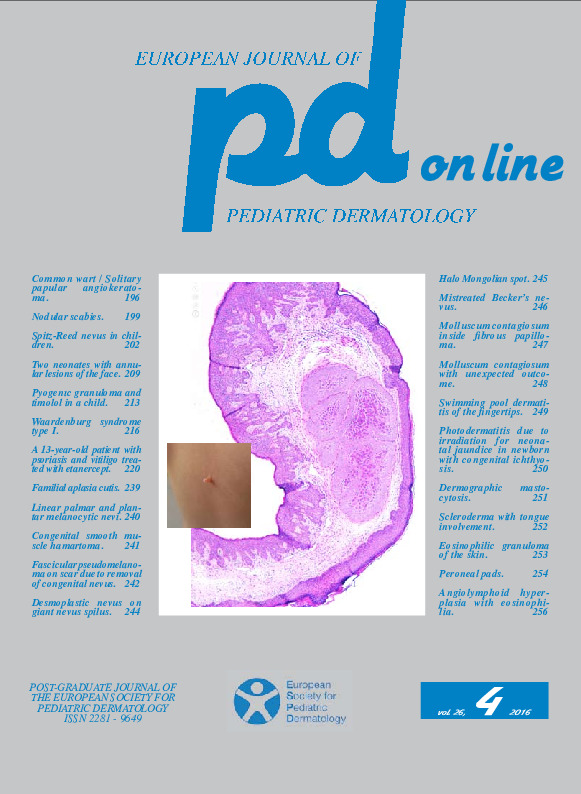Photodermatitis due to irradiation for neonatal jaundice in newborn with congenital ichthyosis.
Downloads
DOI:
https://doi.org/10.26326/2281-9649.26.4.1295How to Cite
Milano A. 2016. Photodermatitis due to irradiation for neonatal jaundice in newborn with congenital ichthyosis. Eur. J. Pediat. Dermatol. 26 (4): 250. 10.26326/2281-9649.26.4.1295.
pp. 250
Abstract
Phototherapy in newborns with jaundice is aimed to prevent and reduce the hyperbilirubimemia; this result is obtained with the structural photoisomerization of bilirubin, that is, with the rearrangement of atoms of its molecule that leads to the formation of lumirubin and its rapid excretion in the bile and urine.Phototherapy may be associated with side effects, the most serious of which is bronze baby syndrome, caused by accumulation of coproporphyrin that gives a dark gray color to the skin, urine and serum.
Less severe side effects may be related to the erythematigen activity of radiation with inflammatory reactions that simulate a sunburn (1, 2).
In our case the intense erythematous and scaling reaction in the sites exposed to radiation obscured initially the symptoms of congenital ichthyosis.
Keywords
Congenital ichthyosis, Neonatal jaundice, Phototherapy

